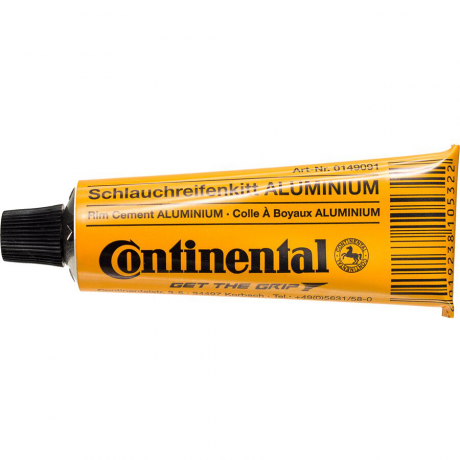Continental Rim Cement for Sale, Reviews, Deals and Guides
$1.99
$1.19
$1.79

In the tubular tire-rim interface, the difficult surface to work with is the rim. Base tape, which is just about always a woven strip of cotton cloth, is easy. Glue seeps between the threads, stays there, and dries. The rim is another story. The glue has to bond to the rim in some way, but not permanently. Though alloy rims don't pose a problem, conventional wisdom is that conventional tubular glue takes a bit more care in prep when mounting tubulars to carbon rims, so Continental developed two types of Rim Cement in order to reduce the risk you'll suffer a Beloki due to poorly matched adhesives.
Conti's standard glue is optimized for aluminum; the carbon-specific glue is optimized for carbon. They aren't willing to divulge to us the science behind what makes the carbon-specific cement carbon-specific, no doubt fearing the rise of a Competitive Cyclist tub glue competitor. All the same, Continental assures us that either will work on either rim, just the specific glues work better with their intended rims.
Regardless of Conti's assurances, we recommend going with the standard option for alloy and the carbon option for carbon. To justify our position, we refer you again to the above Beloki reference. That crash may have been caused by melting glue on a hot descent with heavy braking, but there's no reason to add any more risk than necessary.
Despite the presence of whatever alchemical agent recommends the carbon cement for carbon rims, the two glues are about the same in terms of texture, viscosity, curing time, etc. A single 25g tube of Continental Carbon Rim glue should be enough to secure one tire to one wheel, with maybe a little left over.
Full Reviews

March 20, 2015

April 10, 2014

September 20, 2012

December 9, 2008



